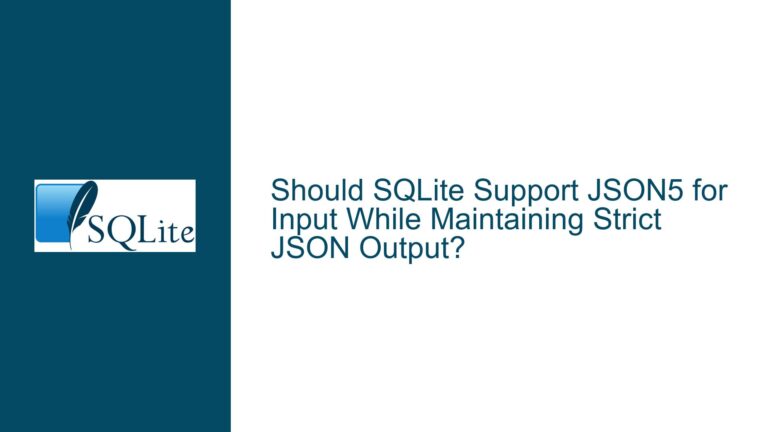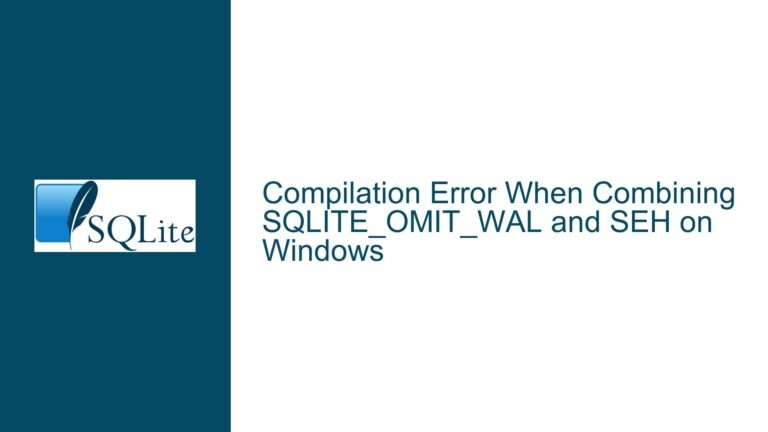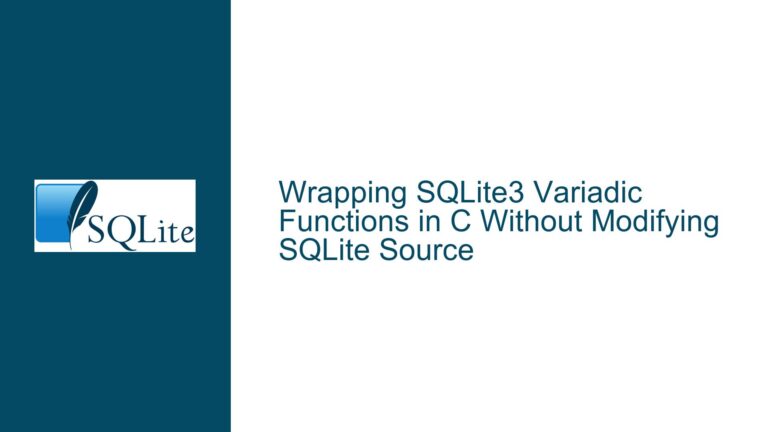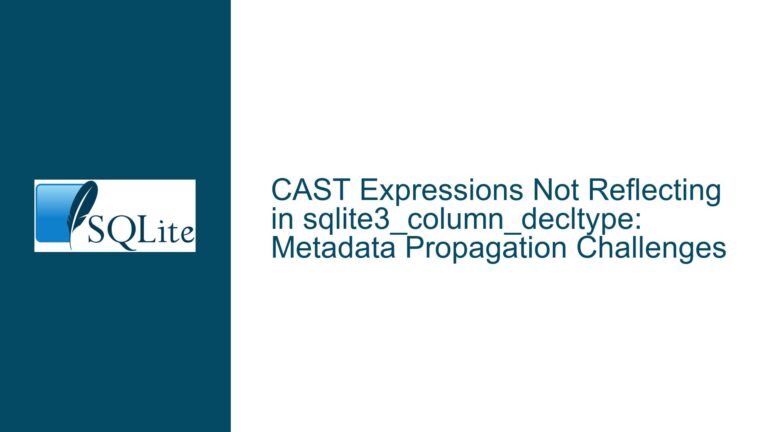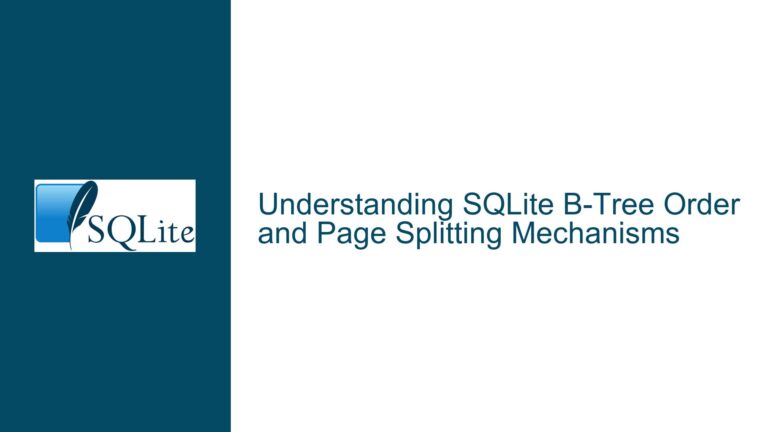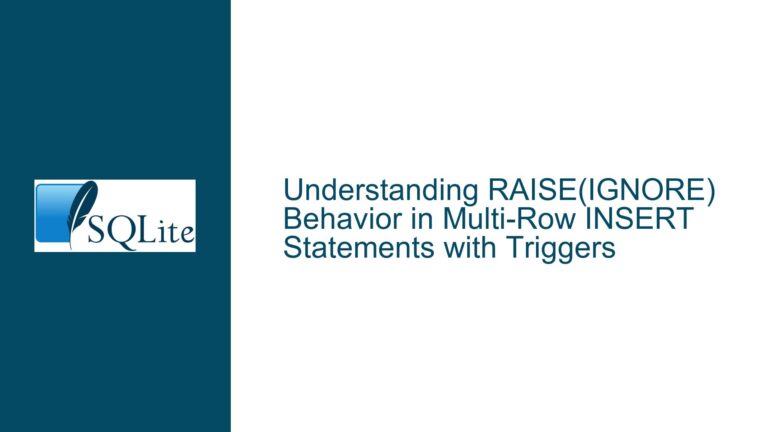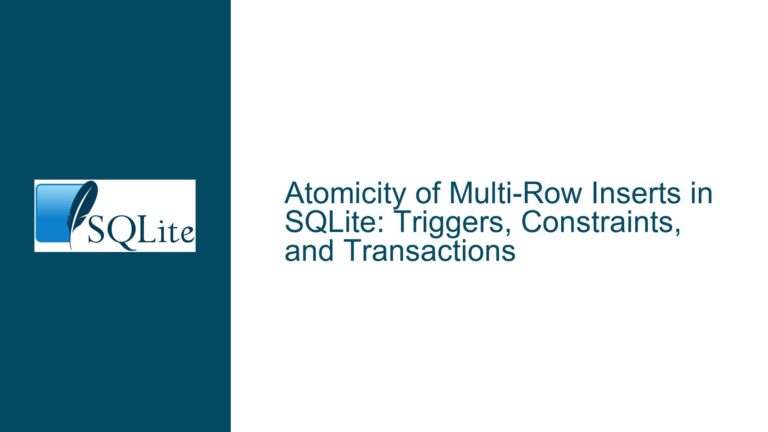Should SQLite Support JSON5 for Input While Maintaining Strict JSON Output?
Issue Overview: JSON5 Support in SQLite’s JSON1 Extension The core issue revolves around whether SQLite should extend its JSON1 extension to support JSON5, a relaxed version of JSON designed for human readability and ease of manual generation. JSON5 introduces several syntactic relaxations compared to strict JSON, such as allowing unquoted object keys, trailing commas, single-quoted…
